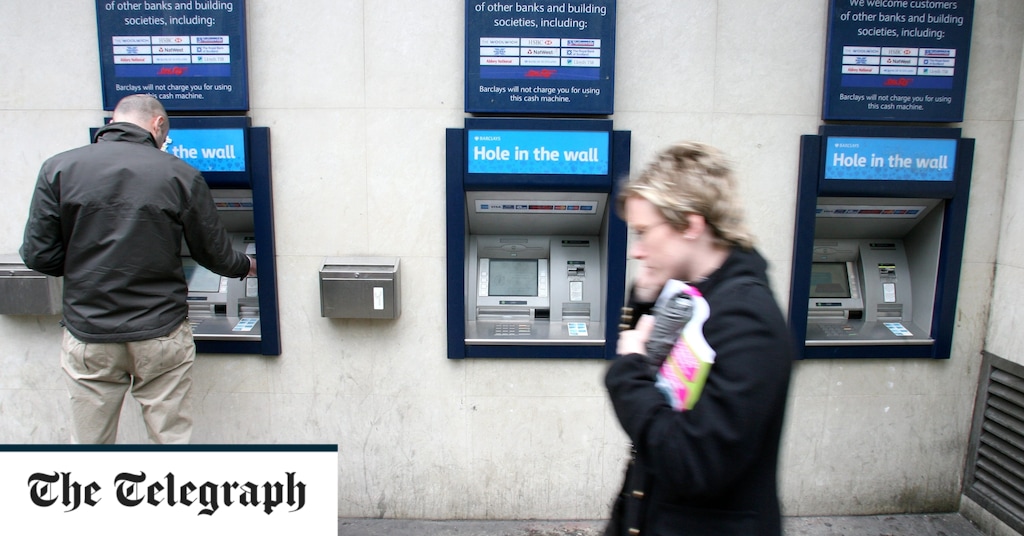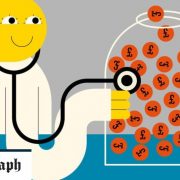At last, the never-ending lists of passwords and Pins (which banks tell us we must never write down but which millions of us do) are to be consigned to history
No more scratching of heads trying to recall a “memorable place” or the “name of your first pet”
Instead, if we want to speak to our bank or make a payment, we will verify our identities simply by speaking, or by presenting our fingerprint to a sensor
At least, that is the promising glimpse into the future
Yesterday Barclays became Britain’s first bank to offer “voice recognition” access to customers using phone banking.
To sign up, users will say several phrases over the phone, which the bank’s systems will analyse and store, with tone, pitch, cadence and gaps between words among the vocal attributes analysed.
When that customer calls again, instead of going through a tedious series of security questions, they will be asked to say something which will be checked against their digital “voiceprint”
The new technology was promoted by Joanna Lumley, whose voice was analysed as she recited the proverb “you can lead a horse to water but you cannot make him drink”
HSBC and its offshoot First Direct will offer a similar service later this year.
Why is this technology being introduced? Customer annoyance at the “password plague” is not the only reason banks are rushing in this new technology.
Fraud is a more powerful motive for the banks – and it is on the rise.
According to Financial Fraud Action UK, online and phone banking fraud jumped 64 per cent and 92 per cent respectively in 2015 (see below).
The organisation defines these crimes as “fraudsters gaining access to, and transfering funds from, an individual’s account”.
It attributes the sudden rise to “a change in attack methods, with criminals using social engineering scams such as phishing, vishing (phishing over the phone) in combination with more sophisticated online attacks such as infecting computers with malicious software”.
It also counts incidents – frequently reported by Telegraph Money – where victims are tricked into transferring money themselves, often by criminals posing as bank staff.
In the case of Annette Jefferys, pictured below, a London businesswomen, criminals posed as NatWest staff.
Their intimate knowledge of the bank’s security procedures, along with information they probably obtained about Ms Jefferys from publicly available sources, enabled them to jam her account and then request a genuine telephone text code to unlock it again.
This convinced her she was dealing with the bank, and she duly transferred £17,500 to the criminals’ account in June this year. Only 10p was recovered.
Senior bankers now privately accept that their customers have reached a point of “security information saturation”.
The sheer volume and variety of passwords, Pins and other information required from customers during the security-checking processes means it has become difficult to distinguish between genuine bank personnel and increasingly plausible crooks.
Will this new ‘biometric banking’ make life easier?
Barclays’s action is far from one-off. Other banks are trialling similar or even more futuristic forms of biometric analysis, including vein pattern and pulse rhythm detection (see below).
David Steele of charity Age UK largely welcomed the technology: “Banks want us to use the phone and internet more, yet there is conflict, because they still require us to make some transactions in person, which is hard when branches are closing.”
While voice recognition might be a welcome short-cut through banks’ security procedures, it would not necessarily end the blight of push-button menus, he said.
“People get stuck in queues, not knowing which choice to select, failing to remember options, or possibly not hearing them properly in the first instance,” he said.
“What customers really want is to be able to ring up and say ‘I am Mrs Smith, please can I do such-and-such’. “If technology helps more banks deliver that sort of service, then it’s to be welcomed.”
Biometric banking: who’s offering what?
Barclays has offered voice recognition on the phone to a limited number of customers since 2013. It will now offer it to all phone banking customers.
The bank also launched “finger vein” verification in 2014, using infrared light to store the shape of a user’s veins. It says this will be more widely used in future.
New bank Atom, focused on mobile banking, introduced the option of logging in using facial and vocal recognition instead of passwords for its customers when it launched in April this year.
First Direct is launching voice recognition and fingerprint sensors for telephone banking customers, and HSBC is due to roll out the same service to 15 million customers within the next couple of months.
RBS and Natwest already offer customers the option to use their fingerprints to log in to their mobile banking apps.
Lloyds has trialled the use of “Amazon Echo”, a wireless speaker which can be controlled via voice along the lines of iPhone’s Siri, with online banking. This would allow customers to log in using their voice.
Halifax has trialled a wristband which can identify customers by their heartbeat rhythm. The wristband is worn by the user and communicates with an app on their phone.
Nationwide Building Society is also looking at "wearable technology".
Apple Pay, launched last year, allows users to store payment card details on their iPhones. Users have to hold their finger over the fingerprint sensor on the home button while holding it up to the contactless card machine to authorise transactions.
























Comments